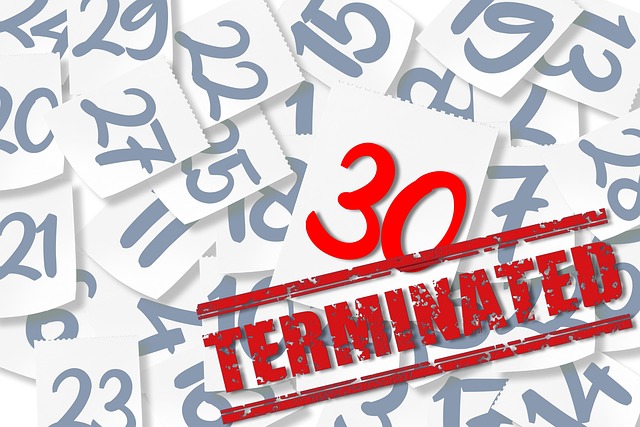Oregon's robust legal system rigorously enforces support payments for both child support and spousal maintenance. The process begins with a court order setting terms and amounts, followed by collection methods like wage garnishments, bank account levies, and license suspensions by the Oregon Department of Social Services (DSS). This multi-step approach ensures individuals fulfill financial obligations, benefiting children or former spouses. Technological advancements streamline the process, while ongoing training, communication improvements, and legislative changes address challenges, upholding fairness and protecting rights within Oregon's support enforcement system.
In Oregon, enforcing support payments is a multifaceted process governed by a robust legal framework designed to safeguard the well-being of children and ensure financial responsibility. This article delves into the intricate workings of Oregon’s support enforcement system, exploring key components such as understanding the legal framework, the step-by-step support payment process, and the pivotal role played by the Oregon Department of Social Services (DSS). We also analyze the impact of technology on collection efforts, while highlighting challenges and recent developments in this dynamic field.
- Understanding Oregon's Legal Framework for Support Enforcement
- The Process of Enforcing Child Support Payments in Oregon
- Role of the Oregon Department of Social Services (DSS) in Support Enforcement
- Legal Measures and Court Actions for Non-Compliance with Support Orders
- Impact of Technology on Oregon's Support Payment Collection System
- Challenges and Recent Developments in Oregon's Support Enforcement Practices
Understanding Oregon's Legal Framework for Support Enforcement

Oregon has a well-defined legal framework for enforcing support payments, focusing on both child support and spousal maintenance. The state’s approach to enforcing support payments is primarily handled through the Oregon Department of Social Services (DSS), which plays a crucial role in collecting and distributing support funds. The support payment process begins with a court order, determining the amount and terms of payment, which serves as the legal foundation for subsequent enforcement actions.
Oregon’s legal support enforcement mechanisms include various tools such as wage garnishment, bank account levies, and suspension or revocation of driver’s licenses. These methods are employed to ensure that individuals comply with their support obligations. The DSS actively monitors and collects these payments, distributing them accordingly to the intended recipients, be it for the benefit of children or former spouses.
The Process of Enforcing Child Support Payments in Oregon

In Oregon, enforcing support payments is a systematic process overseen by the Department of Human Services (DHS). It begins when a court issues an order for child support, setting out the amount and terms of payment. Non-compliance is taken seriously, as it can lead to various legal consequences. The DHS utilizes several methods to enforce these orders, including wage garnishments, where employers deduct the required support from an obligor’s earnings. If an obligor fails to make payments, the state may take additional actions such as suspending driving privileges, placing liens on assets, or even initiating criminal proceedings for willful failure to support one’s child.
The process involves several steps to ensure fairness and accuracy. The DHS verifies income, establishes a payment plan if needed, and monitors compliance through regular check-ins and records updates. Parents who fall behind on payments are encouraged to communicate with the department to explore options like modifying the support order or adjusting payment methods. Legal support enforcement in Oregon is designed to protect both children’s interests and the rights of responsible parents to make manageable payments while adhering to state laws.
Role of the Oregon Department of Social Services (DSS) in Support Enforcement

The Oregon Department of Social Services (DSS) plays a pivotal role in enforcing support payments within the state. With its primary focus on promoting well-being and assisting vulnerable populations, DSS oversees a comprehensive system designed to ensure that children and their families receive financial support from absent or non-cooperative parents. This involves implementing robust strategies for Oregon support enforcement, which encompass various legal mechanisms aimed at collecting and distributing support payments effectively.
Through its dedicated divisions and programs, DSS orchestrates the entire support payment process, from establishing obligations under Oregon child support enforcement laws to employing legal support enforcement methods when necessary. By leveraging data analytics and collaborative efforts with local courts and collection agencies, DSS enhances its ability to enforce support legally, ensuring that financial responsibilities are met for the benefit of Oregon’s children and families in need.
Legal Measures and Court Actions for Non-Compliance with Support Orders

In Oregon, the process of enforcing support payments, be it child support or spousal maintenance, is governed by strict legal measures designed to ensure compliance with support orders. When a payer fails to meet their obligations, several steps can be taken. The first involves direct communication between the recipient and the payer, encouraging them to fulfill their duties. If this proves ineffective, recipients can seek legal assistance from the Oregon Department of Social and Human Services (ODSHS) or file a motion in court.
Court actions for non-compliance include asking the judge to enforce the support order, which may result in wage garnishments, tax refunds being withheld, or even jail time for willful failure to pay. The court can also modify the support order based on significant changes in circumstances, ensuring fairness and accuracy in the support payment process. These legal support enforcement methods are crucial in Oregon to protect the rights of recipients and ensure that support payments are received as intended.
Impact of Technology on Oregon's Support Payment Collection System

In recent years, technology has significantly transformed Oregon’s support payment collection system, enhancing efficiency and reaching a broader range of individuals. Online platforms and automated systems have streamlined the process of enforcing support payments, ensuring that parents fulfill their legal obligations. The state has embraced digital tools to facilitate child support enforcement, allowing for real-time updates and secure transactions. This technological advancement not only simplifies the support payment process but also increases accountability among payors.
Through digital channels, Oregon can now swiftly locate non-paying parents, disburse payments electronically, and track financial history with ease. This modern approach to legal support enforcement has proven effective in reducing arrears and ensuring timely contributions. As technology continues to evolve, the state’s ability to enforce support payments will remain robust, fostering a more secure environment for all involved parties.
Challenges and Recent Developments in Oregon's Support Enforcement Practices

Oregon has been facing challenges in enforcing support payments, particularly when it comes to ensuring compliance with legal requirements. The state’s child support enforcement agency has struggled to keep up with a growing caseload and evolving legal landscapes. Delving into recent developments, we see efforts to streamline the support payment process through technological advancements, such as online payment platforms and automated systems for tracking obligations. These innovations aim to enhance efficiency and accessibility, making it easier for both parents to fulfill their financial responsibilities.
However, challenges remain. Legal complexities, including variations in court orders and interpretation of laws, can create obstacles. Oregon has addressed these by implementing more rigorous training programs for enforcement agents and promoting better communication between agencies and individuals involved. Additionally, recent legislative changes have empowered the state to take a firmer stance on non-compliance, ensuring that support payments are collected effectively while protecting the rights and interests of all parties involved.






